Have you ever wondered how a tiny virus can make us sick? Even though they're so small, they can stop the world, as happened at the beginning of the Covid-19 pandemic.
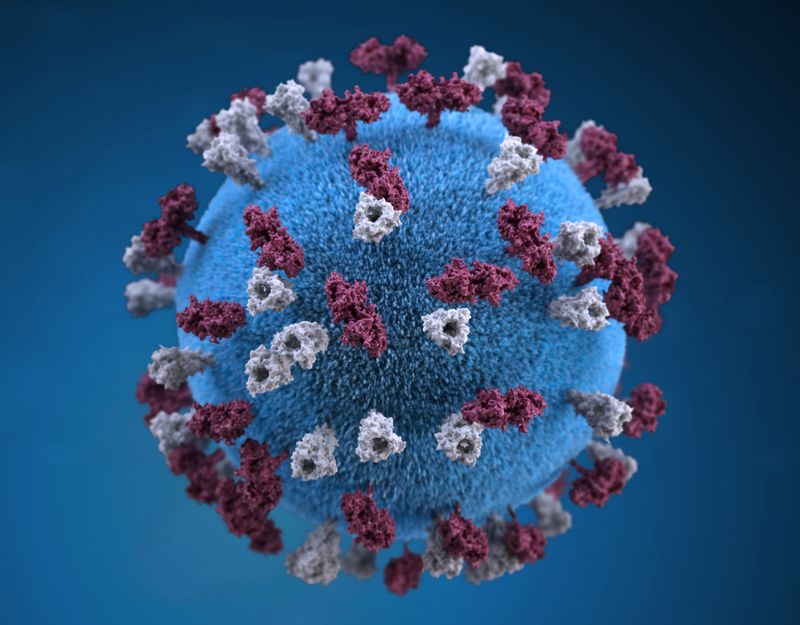
If you're taking a high school biology class, you'll be introduced to the process of how a virus spreads. Knowing the stages of the virus life cycle will help you better understand viral transmission.
What are viruses?
Viruses are microorganisms that contain a small piece of genetic information inside a shell of proteins and need a plant, animal, or human (hosts) to live and reproduce.
They can be transmitted in different ways, like inhalation, ingestion, sexual, or blood transmission.
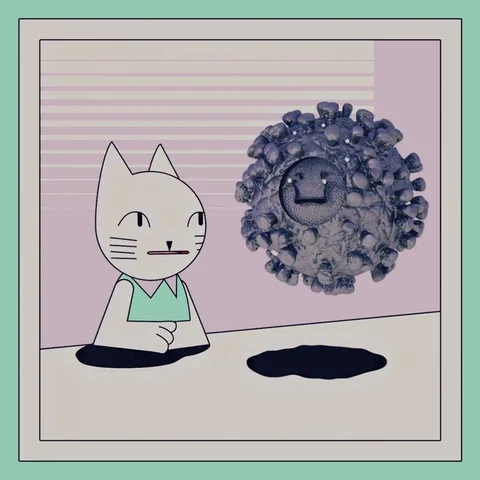
What is the virus life cycle?
Once inside the host, the virus aims to find a cell (host cell) where it can enter to reproduce. This process is called the life cycle of a virus, and most viruses share 5 stages.
Virus Life Cycle Stage 1: Attachment
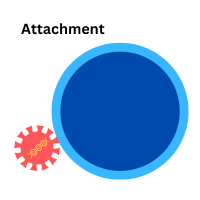 When the virus is inside the host, it attaches to the membrane of the host's cell. The membrane is a super-thin, flexible layer that surrounds and protects the cell (represented by the light blue circle in the graphic above).
When the virus is inside the host, it attaches to the membrane of the host's cell. The membrane is a super-thin, flexible layer that surrounds and protects the cell (represented by the light blue circle in the graphic above).

The virus has specific molecules on its surface (the key) that can only match specific receptors on the host's cell surface (the lock).

When the virus finds the right target it grips tightly to the cell's surface.
This stage is critical because it will determine the type of illness different viruses can cause and which body parts will be affected.
Virus Life Cycle Stage 2: Invasion
 Now that the virus is attached, it will enter the cell. The virus will inject its genetic material (DNA or RNA) or its whole particle.
Now that the virus is attached, it will enter the cell. The virus will inject its genetic material (DNA or RNA) or its whole particle.

Some viruses can fuse with the cell's membrane and have a direct entry.

Others are surrounded by a protective bubble (endocytosis) and swallowed inside the cell.
If the virus has success invading the cell, it will start to replicate and spread.
For this reason, scientists study this stage to understand how the virus enters a cell and how to disrupt this process (with measures like antiviral treatments).
Virus Life Cycle Stage 3: Replication
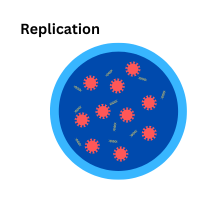 During this stage, the virus takes control of the cell and starts producing multiple copies of itself. It relies on genetic material called DNA and RNA to make these copies.
During this stage, the virus takes control of the cell and starts producing multiple copies of itself. It relies on genetic material called DNA and RNA to make these copies.

If the virus contains DNA, it uses the host cell's resources to transcribe its DNA into RNA (the blueprint to produce viral proteins).

If the virus has RNA, it directly uses the host cell's machinery to produce viral proteins.
The virus can replicate very fast. For this reason, it can cause illnesses and spread quickly among populations.
Scientists also study this stage to find mechanisms to stop the virus from spreading.
Quiz
Which statement about the virus is NOT true:
Virus Life Cycle Stage 4: Assembly
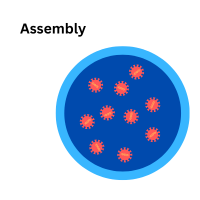 Once there are enough virus copies inside the host's cell, they all come together to create new viruses (virion).
Once there are enough virus copies inside the host's cell, they all come together to create new viruses (virion).

The new viruses bind to each other forming a protective protein coat (capsid) with genetic material inside.

The new virus particles go through a maturation process. Any defective particle will be discarded.
This stage varies among the different types of viruses. Some have complex assembly processes while others have simple and efficient methods.
Virus Life Cycle Stage 5: Release
 This is the final stage. The new viruses are ready to exit the host cell to infect other cells or transmit to new hosts.
This is the final stage. The new viruses are ready to exit the host cell to infect other cells or transmit to new hosts.

Some viruses break the cell membrane and release a large number of new viruses (lysis). This process destroys the cell, causing symptoms of the infection.

Others push their way out of the cell taking a portion of the cell's membrane with it (budding). This process doesn't kill the cell immediately.
Once the new viruses are out, they'll search for new hosts.
This transmission can be by:
Direct contact — when you get in contact with an infected fluid, like blood or sexual transmission
Respiratory droplets — i.e. coughing or sneezing
Contaminated surfaces — if you touch a surface where someone else infected touched or sneezed, and then you touch your nose or mouth.
Carriers (vectors) — like mosquitoes or ticks.
Quiz
Viruses can mutate during different stages, but most of the times it happens when it makes copies of itself. What is the name of this stage?
Take Action
Knowing how a tiny organism like a virus can create so much damage isn't just important for your biology class — you can also put into practice some basic measures to protect yourself and the people around you from virus infections.
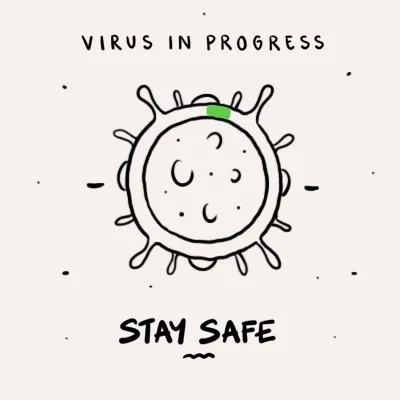
Your feedback matters to us.
This Byte helped me better understand the topic.
